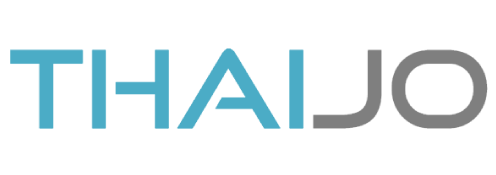Effect of a Self-Management Program on Glomerular Filtration Rate in Hypertensive Patients with Stage 3 of Chronic Kidney Disease
Keywords:
A Self-Management Program, Hypertensive Patients, Stage 3 of Chronic Kidney DiseaseAbstract
The objective of this one-group quasi-experimental study was to evaluate the effect of a self-management program on glomerular filtration rate in hypertensive patients with stage 3 chronic kidney disease. Participants were 27 hypertensive patients with stage 3 chronic kidney disease who enrolled for treatment at Ban Dong Rang Health Promotion Hospital, Suphan Buri province. This study was conducted between April 2022 and August 2022. Data were collected through questionnaires, focus group interviews, and observation. The research instruments were the self-management program that consisted of self-education on healthy behavior, group knowledge sharing, multidisciplinary care, and motivation. Data were analyzed using descriptive statistics, and a paired t-test was used to compare glomerular filtration rate before and after attending the program.
The results showed that after receiving the program, the glomerular filtration rate of the participants (Mean = 51.39, S.D. = 5.10) was significantly higher than before attending the program (Mean = 80.72, S.D. = 7.96) (p-value < 0.001). All participants had a better glomerular filtration rate. Therefore, healthcare providers should implement this program in hypertensive patients with renal complications in order to concretely delay renal degeneration.
References
กองโรคไม่ติดต่อกระทรวงสาธารณสุข. (2564). ข้อมูลโรคไม่ติดต่อ. สืบค้นเมื่อ 25 เมษายน 2564 จาก http://www.thaincd.com/2016/mission/documents-detail.php?id=13893&tid=32&gid=1-020
กันตาภารัตน์ อ้วนศรีเมือง, จิระภา ศิริวัฒนเมธานนท์ และสุพัตรา บัวที. (2556). ผลของโปรแกรมการจัดการตนเองต่อความรู้ การจัดการตนเองและดัชนีชี้วัดทางสุขภาพของผู้ป่วยโรคไตเรื้อรังระยะที่ 3. วารสารสมาคมพยาบาลฯสาขาภาคตะวันออกเฉียงเหนือ, 31(2), 91-99.
จันทร์จิรา สีสว่าง, ปุลวิชช์ ทองแตง, ศิริรัตน์ วิชิตตระกูลถาวร และสุจิตรา ชัยวุฒิ. (2565). ผลของโปรแกรมส่งเสริมการรับรู้โอกาสเสี่ยงของตนเองต่อการเกิดโรคหัวใจและหลอดเลือดในผู้สูงอายุโรคความดันโลหิตสูง. วารสารพยาบาลศาสตร์, 40(13), 42-59.
ทัศนีย์ ขันทอง, แสงอรุณ อิระมาลัย และพัชรี คมจักรพันธุ์ (2556). ผลของโปรแกรมสนับสนุนการจัดการตนเองต่อพฤติกรรมการจัดการตนเองและระดับน้ำตาลในเลือดในผู้ป่วยเบาหวานชนิดที่ 2. วารสารสภาการพยาบาล, 28(1), 85-99.
นริสา วงศ์พนารักษ์ (2557). สัมพันธภาพเพื่อการบำบัด: การประยุกต์ใช้ในกระบวนการพยาบาล. วารสารพยาบาลทหารบก, 15(2), 84-91.
เนตรชนก จุละวรรณโณ (2559). ผลการให้ความรู้รายบุคคลต่อพฤติกรรมการดูแลตนเองของผู้ป่วยวัณโรค. วารสารเครือข่ายวิทยาลัยพยาบาลและการสาธารณสุขภาคใต้, 3(1), 17-30.
ปุลวิชช์ ทองแตง และจันทร์จิรา สีสว่าง. (2564). การพัฒนาเครื่องมือประเมินการรับรู้โอกาสเสี่ยงต่อการเกิดภาวะแทรกซ้อนของโรคความดันโลหิตสูง. วารสารพยาบาลศาสตร์, 39(2), 12-23.
โรงพยาบาลส่งเสริมสุขภาพตำบลบ้านดงรัง. (2565). รายงานโรคไม่ติดต่อประจำปี 2565 โรงพยาบาลส่งเสริมสุขภาพบ้านดงรัง. ม.ป.ท.
สุรดา โพธิ์ตาทอง, ตวงพร พุ่มทองดี และนงลักษณ์ กาญจนเมธาศักดิ์. (2555). ผลของโปรแกรมการจัดการตนเองต่อพฤติกรรมการจัดการตนเองและตัวชี้วัดทางคลินิกของผู้ป่วยโรคไตเรื้อรังจากเบาหวาน. วารสารโรงพยาบาลสกลนคร, 15(1), 31-39.
อนุ อิสระพานิช และกิตติพร เนาว์สุวรรณ. (2565). การพัฒนารูปแบบการดูแลผู้ป่วยเบาหวานและความดันโลหิตสูง ที่มีภาวะแทรกซ้อนทางไตระยะ 4 เครือข่ายสุขภาพอำเภอควนเนียง จังหวัดสงขลา. วารสารวิทยาลัยพยาบาลบรมราชชนนี อุตรดิตถ์, 14(1), 157-175.
Cha’on, U., et al. (2022). High prevalence of chronic kidney disease and its related risk factors in rural areas of Northeast Thailand. Scientific Report, 12, 18188.
Cohen, J. (1988). Statistical power analysis for the behavioral sciences. (2nd). NJ: Lawrence Erlbaum Associates, Publishers.
Faul, F., Erdfelder, E., Lang, A. G., & Buchner, A. (2007). G*Power 3: A flexible statistical power analysis program for the social, behavioral, and biomedical sciences. Behavior Research Methods, 39(2), 175-191.
Hair, F. J., Black, C.W., Babin, J.B., & Anderson, E.R. (2019). Multivariate Data Analysis. (7th ed). New Jersey: Pearson Education.
Kanfer, F.H., & Gaelick-Bays, L. (1991). Self management method. In F.H. Kanfer, & A. Goldstein (Eds.). Helping people change: A textbook of methods (305-360). New York: Pergamon press.
NCD Risk Factor Collaboration. (2021). Worldwide trends in hypertension prevalence and progress in treatment and control from 1990 to 2019: A pooled analysis of 1201 population-representative studies with 104 million participants. Lancet (London, England), 398(10304), 957–980. https://doi.org/10.1016/S0140-6736(21)01330-1.
Thongtang, P., & Seesawang, J. (2022). Barriers and facilitators to successful hypertension management in older adults from the perspectives of community health nurses: A qualitative study. Journal of Nursing Science, 40(1), 35-49.
Welch, J. L., Bartlett Ellis, R. J., Perkins, S. M., Johnson, C. S., Zimmerman, L. M., Russell, C. L., Richards, C., Guise, D. M., & Decker, B. S. (2016). Knowledge and Awareness Among Patients with Chronic Kidney Disease Stage 3. Nephrology Nursing Journal: Journal of the American Nephrology Nurses' Association, 43(6), 513–519.

Downloads
Published
How to Cite
Issue
Section
License
Copyright (c) 2023 Journal of Nursing and Public Health Research

This work is licensed under a Creative Commons Attribution-NonCommercial-NoDerivatives 4.0 International License.
1. บทความหรือข้อคิดเห็นใด ๆ ที่ปรากฏในวารสารวิจัยการพยาบาลและการสาธารณสุข ที่เป็นวรรณกรรมของผู้เขียน บรรณาธิการไม่จำเป็นต้องเห็นด้วย
2. บทความที่ได้รับการตีพิมพ์ถือเป็นลิขสิทธิ์ของ วารสารวิจัยการพยาบาลและการสาธารณสุข








